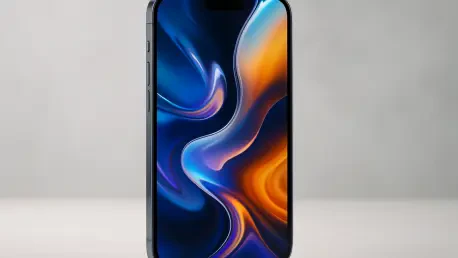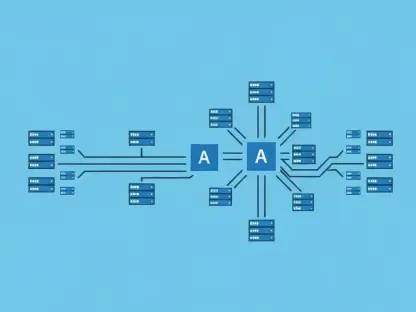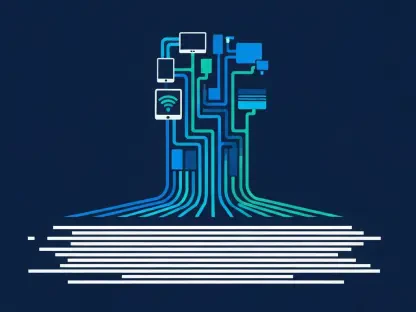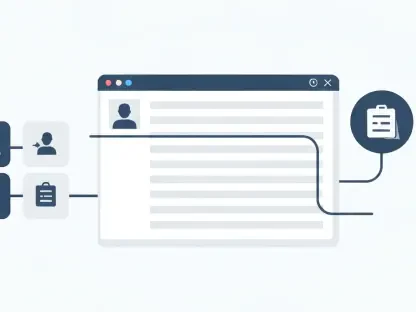As the tech world buzzes with anticipation, Apple is set to captivate audiences today with the iPhone 17 event, kicking off at 1 PM ET, where groundbreaking innovations are expected to take center stage. This highly anticipated showcase, accessible via live stream and detailed liveblog coverage, promises to reveal not only the iPhone 17 lineup—including the strikingly slim iPhone 17 Air—but also new Apple Watch models and updated AirPods Pro. Amidst this excitement, the spotlight also shines on a significant software update that will redefine the user experience across Apple devices. Slated for release roughly a week after the event, this update introduces a visually stunning design language and a host of practical enhancements. For those eager to explore ahead of the official launch, beta versions are already available, offering a glimpse into a transformative aesthetic and functional upgrades. This article delves into the key aspects of this software update, exploring its unique design elements, compatibility details, and the array of features set to enhance daily interactions with Apple devices.
1. Event Anticipation and Initial Software Insights
Today’s Apple event marks a pivotal moment for tech enthusiasts, with the unveiling of the iPhone 17 series expected to dominate headlines. Beyond hardware, the event sets the stage for the introduction of a major software update, anticipated to roll out shortly after the showcase. Historically, Apple releases its new operating systems within a week of such events, and this year appears to follow suit. For those unable to wait, public beta 6 and developer beta 9 are accessible now, providing an early look at what’s to come. A defining feature of this update is a translucent design aesthetic, applied across apps, lock screens, and home screens, signaling a bold shift in visual identity. This design overhaul is accompanied by a focus on practical improvements, a departure from last year’s ambitious yet unfulfilled promises in artificial intelligence, aiming instead to refine the everyday user experience.
Further intrigue comes from ongoing beta updates, which continue to reveal surprises such as potential AirPods translation capabilities and playful animations in key interface areas like the passcode screen. These incremental discoveries keep anticipation high as the final version nears. Compatibility is another critical aspect, with most recent iPhone models eligible for this update, ensuring a broad user base can experience the enhancements. The following sections will break down the specifics of this software, from its naming convention and design philosophy to the detailed feature set and device compatibility, providing a comprehensive overview of what to expect in the coming weeks.
2. Defining the New Software Version
The current iPhone operating system, iOS 18, has seen recent patches like version 18.6.1, which restored specific Apple Watch functionalities for some users in the US, and 18.6.2, addressing a security flaw in image processing. However, Apple has ceased signing iOS 18.6, meaning it can no longer be installed as newer versions take precedence. In a surprising move, the company is leapfrogging traditional numbering, bypassing iOS 19 and introducing iOS 26. This shift aligns the version with a year-based naming system, similar to car model years, targeting a reflection of the upcoming year despite a late release this year. Additionally, reports suggest iOS 18.7 will launch concurrently to tackle lingering security issues, ensuring a robust transition.
This naming strategy underscores Apple’s intent to synchronize its software identity with forward-looking branding, a decision that sets iOS 26 apart from its predecessors. While the jump in numbering might seem abrupt, it reflects a deliberate effort to redefine how updates are perceived, tying them to annual cycles rather than sequential increments. This approach also extends to sibling operating systems across Apple’s ecosystem, maintaining consistency in versioning. As the rollout approaches, understanding this context provides clarity on Apple’s long-term vision for software evolution, setting the stage for the innovative features and design changes that define iOS 26.
3. Exploring the Innovative Liquid Glass Aesthetic
One of the most talked-about elements introduced at this year’s WWDC is the Liquid Glass design, a visual refresh that transforms the look of iPhone home and lock screens. After years of relatively static interfaces, this update brings a much-needed facelift, described by Apple as a “new translucent material.” Apps and widgets adopt a clear appearance, seamlessly adapting to light and dark modes based on environmental conditions. Floating buttons in applications like Phone and Maps further enhance this aesthetic, crafted to minimize distraction while remaining easily visible. Though opinions on this design vary, some industry voices have praised its fresh direction, drawing parallels to nostalgic translucent interfaces from decades past.
Apple has not remained static in response to feedback, adjusting the transparency levels in certain areas as seen in the second beta of iOS 26, indicating a willingness to refine based on user input. This design is not just a superficial change; it’s a unifying element intended to create cohesion across all Apple platforms, extending to macOS Tahoe 26 and beyond. As a core component, users will encounter Liquid Glass across various interfaces, making it an inescapable yet potentially iconic shift in how Apple devices are experienced. This commitment to a consistent visual language suggests a broader strategy to harmonize user interaction across the ecosystem, a theme that resonates through the update’s other features.
4. Highlighting Key Functional Enhancements in iOS 26
iOS 26 brings a robust set of features aimed at improving usability across multiple applications. The Phone app receives a significant redesign, consolidating contacts, recent calls, and voicemail into one streamlined screen, while the Hold Assist feature alerts users when a call center agent is ready, eliminating the frustration of hold music. Real-time translation in Phone, FaceTime, and Messages enables cross-language conversations, though the flow may feel slightly disjointed. Group chat polls simplify decision-making in Messages, while spam filtering relegates texts from unknown senders to a separate folder. Visual Intelligence acts as a reverse image search, allowing users to identify items directly from their screens, enhancing discovery and convenience.
Beyond communication, iOS 26 refines other core experiences with a range of thoughtful updates designed to enhance user interaction. The Photos app restores distinct tabs for Library and Collections, easing navigation, while the Camera app improves with better-placed controls and a lens cleanliness notification. Safety features in FaceTime pause communication if inappropriate content is detected, prioritizing child safety with on-device processing. Lock screen customization expands with new clock designs, 3D wallpapers, and widget options, alongside adjustable alarm snooze durations from 1 to 15 minutes. Screenshots gain advanced tools like search integration and AI query support, showcasing a thoughtful approach to enhancing everyday interactions with practical, user-focused updates.
5. Advancements in iPadOS 26
The updates extend beyond iPhones, with iPadOS 26 introducing meaningful improvements for tablet users, enhancing their overall experience. Multitasking takes a leap forward, allowing multiple apps to run simultaneously on-screen with resizable and movable windows, a feature that can be toggled off if preferred. This flexibility caters to power users seeking a desktop-like experience while maintaining simplicity for others. The Liquid Glass design also graces iPadOS, refreshing lock and home screens as well as drop-down menus, aligning the visual experience with other Apple platforms. These changes aim to elevate both productivity and aesthetic appeal, ensuring iPads remain versatile tools for work and leisure.
Additionally, a revamped menu bar enhances navigation, accessible via a swipe-down gesture and featuring options like File, Edit, and Window, alongside a handy search function for quick access to content. This update reflects Apple’s focus on streamlining interaction, making complex tasks more intuitive on larger screens. For those curious about the full scope of changes, initial impressions of iPadOS 16 offer deeper insights into how these updates transform the iPad experience. As with iOS 16, the emphasis lies in balancing innovation with usability, ensuring that design and functionality work hand in hand to meet diverse user needs across Apple’s tablet lineup.
6. AirPods Upgrades Tied to iOS 26
AirPods are not left out of the update cycle, gaining notable enhancements alongside iOS 26, which marks a significant step forward in their functionality. Audio recording quality improves significantly, described as “studio-quality,” with better clarity even in noisy environments, making them ideal for voice notes or calls on the go. A unique camera control feature allows users to trigger photo or video recording on their iPhone or iPad with a single press on the AirPods, complete with a 3-second countdown for photos. These additions highlight Apple’s intent to integrate AirPods more deeply into the broader device ecosystem, extending their utility beyond audio playback to practical, everyday tasks.
Rumors and beta discoveries add further excitement, with hints of a live translation feature for AirPods, potentially activated by pressing both earbud stems, facilitating multilingual communication. Additionally, speculation from industry analysts suggests upcoming AirPods Pro models might include heart rate monitoring, syncing with health and fitness apps for a more comprehensive wellness experience. While some of these features remain unconfirmed, their potential inclusion points to a future where AirPods serve as multifaceted tools, blending audio, control, and health functionalities seamlessly with the iOS 26 framework, enriching the user experience across multiple touchpoints.
7. Siri’s Current State and Future Prospects
Siri remains in a transitional phase with iOS 26, as Apple has delayed major updates to the voice assistant until sometime in the coming year, according to announcements from WWDC 2024. Current beta versions show no significant changes, maintaining the familiar functionality for now. However, industry reports indicate a substantial overhaul is on the horizon, potentially integrating advanced third-party AI models to enhance Siri’s capabilities. This could position Siri as a more competitive assistant in the evolving landscape of voice technology, addressing past criticisms of its limitations.
Looking ahead, there’s talk of Apple developing a simplified AI chatbot to rival existing solutions, suggesting a broader strategy to bolster intelligent interactions across devices. If realized, these advancements could make the following year a turning point for Siri, transforming it into a more intuitive and powerful tool. For now, users must rely on the existing framework within iOS 26, with the promise of innovation looming as a key area of focus for Apple. This holding pattern underscores a deliberate pacing in rolling out AI-driven features, ensuring they meet high standards before public release, maintaining user trust in the ecosystem.
8. Device Compatibility for the Upcoming Update
Ensuring broad accessibility, iOS 26 supports a wide range of iPhone models, though some older devices are excluded from the update. Models such as the iPhone XR, XS, and XS Max will not be compatible, marking the end of support for these units. However, devices from iPhone SE (second generation or later) through the iPhone 16 series, along with the anticipated iPhone 17 models set for announcement in September, are all eligible. This extensive compatibility list reflects Apple’s commitment to keeping a significant portion of its user base updated with the latest software capabilities.
This compatibility framework ensures that users with devices from 2019 onward can experience the new design and features of iOS 26, bridging hardware generations with consistent software innovation. For those with supported models, the update promises to deliver the full spectrum of enhancements, from visual overhauls to functional upgrades, without requiring immediate hardware upgrades. As Apple continues to push software boundaries, maintaining compatibility across a wide range of devices remains a priority, allowing users to stay current with minimal barriers to entry, a strategy that fosters loyalty and engagement within the ecosystem.
9. Steps to Access the Beta Version
For those eager to test iOS 26 before its official release, the public beta is available through the Apple Beta Software Program. The first step involves signing up at the designated beta website using a phone number or email address, a process that incurs no cost. Once enrolled, users can navigate to Settings > General > Software Update on their iPhone and select the iOS 26 public beta option to begin installation. This early access provides a valuable opportunity to explore the new features and design elements firsthand, offering a preview of the full release expected soon.
A note of caution is warranted, as beta software is not finalized and may carry risks such as bugs or instability, so it’s advisable to avoid installing the beta on a primary device to prevent potential disruptions to daily use. This precaution ensures that users can experiment with the update without compromising essential functionality. For tech enthusiasts and developers, the beta serves as a testing ground to provide feedback and shape the final version, contributing to a polished experience when iOS 26 reaches the broader public in the coming weeks, aligning with Apple’s iterative improvement process.
10. Timeline for the Official Release
The official release of iOS 26 is expected this fall, traditionally within a week of Apple’s September iPhone event. Given this year’s iPhone 17 event on September 9, speculation points to a possible launch around September 16, mirroring last year’s timeline when the update rolled out exactly seven days post-announcement. Apple has since confirmed during the event that iOS 26, along with other operating system updates, will be available as free upgrades on September 15, providing clarity for users planning to update their devices promptly after the reveal.
This predictable release schedule allows users to prepare for the transition, ensuring devices are backed up and ready for the new software. The fall timing aligns with Apple’s annual cycle of major updates, often coinciding with new hardware launches to maximize impact and user adoption. As the date approaches, staying informed about any last-minute adjustments or additional features announced post-event will be key for a smooth update process. This consistent cadence of releases reinforces Apple’s strategy of delivering timely enhancements, maintaining momentum in the competitive tech landscape with each new iteration of its operating system.
11. Reflecting on the Apple Event Highlights
The recent Apple “Awe Dropping” event concluded with a flurry of announcements, unveiling the iPhone 17, iPhone Air, and iPhone 17 Pro and Pro Max models, each showcasing cutting-edge advancements. Alongside these, the AirPods Pro 3 debuted with confirmed live translation and heart rate sensor capabilities, while the Apple Watch lineup expanded with SE 3, Series 11, and Ultra 3 models. These reveals underscored Apple’s commitment to integrating hardware and software innovations, with iOS 26 playing a central role in enhancing the functionality of these new devices. Detailed recaps of the day’s events, captured through live coverage, provided a comprehensive look at how each announcement unfolded.
Looking back, the event served as a platform to not only highlight new products but also confirm the availability of iOS 26 and related updates as free downloads on September 15. This strategic timing ensured that users could pair the latest hardware with the most current software, maximizing the potential of both. As the tech community digested these developments, the focus shifted to how these integrations would shape user experiences in the months ahead. Moving forward, exploring the full capabilities of iOS 26 on compatible devices and staying updated on beta feedback will be crucial steps for users aiming to leverage the full spectrum of Apple’s latest ecosystem advancements.









